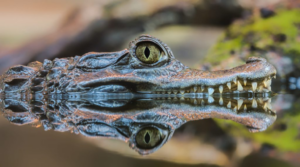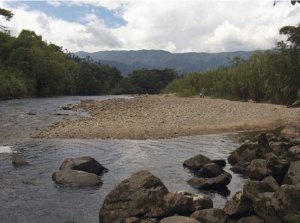If you’re a bird enthusiast, Mindo is the place to be. Located in the northwest of Pichincha, two hours away from Quito, this parish is known globally for its impressive array of bird species, making it one of the best destinations for birdwatching. In this article, we’ll take a closer look at Mindo and the variety of birds that can be found in the area.
The Christmas Bird Count in Mindo
Mindo is home to the Christmas Bird Count, which takes place in December every year. The 19th edition of the event will cover a 24-kilometre circle that includes the Cinto river to the north, the Yanacocha sector to the south, Mindo to the east, and Nono to the west. This area, called Mindo-Tandayapa, is one of the top three places for bird observation globally. The El Paseo del Quinde eco-route is also part of this sector and is considered a dynamic element of the area’s economy.
Mindo’s Bird Diversity
Because of its great diversity, Mindo is recognised globally as a unique location for bird watching. With more than 550 bird species inhabiting the area, it has been declared an Important Bird Area by Birdlife International. For that reason, national and foreign ornithologists and specialists participate in the Christmas bird count every year. The Ministry of Tourism supports these sustainable and environmentally-friendly initiatives by providing each participant with posters, cards, and brochures of the country’s most precious birds, along with a snack during the count.
The species that can be spotted include the Andean Cock-of-the-rock (Rupicola peruviana), Swainson’s Toucan (Ramphastos swainsonii), Bar-bellied Woodpecker (Semnornis ramphastinus), Club-winged Manakin (Machaeropterus deliciosus) and Torrent Duck (Merganetta armata), among other. There are also several hummingbird species, including the Long-tailed Sylph, Mountain Velvetbreast, Tourmaline Sunangel, Sword-billed Hummingbird and the Chestnut-breasted Coronet. These tiny birds are fascinating to watch, and Mindo is the perfect place to see them.
The Andean Cock-of-the-rock
The Andean Cock-of-the-rock, also known as “gallo de la peña”, is one of the most exotic wild birds in the world due to its striking plumage. It is mainly found in ravines and alongside rivers that flow down from the mountains through deep valleys. It is frugivorous and feeds on wild fruits, and its feeding activities are usually at dusk. Furthermore, the males are good singers and dancers. This species lives in the foothills of the Andean mountain range, between 500-2,400 metres, from western Venezuela to Bolivia. In Quito, it can be observed in the rural parishes of the northwest between 900-2,100 metres above sea level. The closest place to appreciate this bird is in the El Pahuma reserve, about an hour away from Quito.

Photo: Galapagos Insides (s,f)
Swainson’s Toucan
Swainson’s Toucan can be found in Central and South America, including Costa Rica, Panama, Honduras, Nicaragua, Venezuela, Bolivia, Ecuador, and Colombia. In Ecuador, they inhabit the Coastal region in humid forests in the lowlands and foothills of the west. They feed mainly on a variety of fruits, small animals, and bird eggs. They have a very long beak measuring 16-18 cm, with the upper part of the beak yellow and the lower part dark brown. In addition, the body is mostly black with a white rump, a red lower zone, a yellow throat and chest bordered below by a red band.

Photo: Ecuador Life and Culture (s,f)
The Bearded Toucan
The Bearded Toucan is a relatively abundant species in the Mindo and Tandayapa region, located in the western foothills of the Andes. It can be found in the understory of humid montane and cloud forests in the subtropical zone of the area. This bird is known to inhabit primary and secondary forests, forest edges, and even altered habitats. Moreover, its range extends from northwestern Ecuador southward to the west of Cotopaxi.
Scaled Fruiteater
The Scaled Fruiteater is a chubby bird with a short tail and a flat head. It has moss green and black patterns, with broad green wing bars and a black cap. The female has less black in the plumage than the male, but also has scaled plumage. This bird is discreet and often perches quietly in the middle or upper levels of the Andean cloud forest. It is more often seen near a fruiting tree and occasionally follows mixed-species flocks. Listen for its loud descending whistle.

Foto: Neotropical Ecuador (s,f)
Long-tailed Sylph
The Long-tailed Sylph is a striking hummingbird with an extremely long tail. The male is mostly emerald green with a greenish-blue throat and a long, forked tail. The female, on the other hand, has a shorter tail, a spotted throat, a beige belly, and a short white moustache. This bird is mainly found on the eastern slope of the Andes from Venezuela to Bolivia, in the foothills and subtropical zones from 1,200-2,500 metres above sea level. It occurs within the cloud forest and at its edges, and it visits feeders.
Mountain Velvet Breast
The Mountain Velvet Breast is a hummingbird best recognised by its long, curved bill and mostly white tail, especially visible in flight. The males are mostly green with a black belly, while the females are whitish or beige below with green scales. This bird occupies forests and edges of high elevations from Venezuela to Peru, occurring at around 2,500-3,400 metres and occasionally ranging lower. It visits feeders but is often quite shy.
Tourmaline Sunangel
The Tourmaline Sunangel is a relatively common bird in forests and high elevation edges in the Andes of Colombia and Ecuador. It is a dark hummingbird with a rather short and straight bill. The male has a bright purple throat and a blue-green forehead, while the female has a white throat. Note its white undertail coverts and the relatively long forked tail. This bird also visits feeders.
Sword-billed Hummingbird
The Sword-billed Hummingbird is a remarkable species with the longest bill relative to body size of any bird in the world. In addition to its notable bill, this species has mostly dull green body coloration and a bronzed head. It occurs in the temperate zone of the Andes, from Venezuela to Bolivia, at elevations of approximately 2,500-3,500 metres. It inhabits mountain forests and edges and feeds on long tubular flowers using its bill. This species also visits feeders.
Chestnut-breasted Coronet
The Chestnut-breasted Coronet is a striking hummingbird species that occurs from southwestern Colombia to Peru in the Andean cloud forest. This aggressive species has green upperparts and hood, chestnut breast and belly, and a relatively short bill. Both sexes are similar in appearance. When perching, the Chestnut-breasted Coronet usually raises its wings for a fraction of a second. Furthermore, it is often seen defending a patch or feeder of flowers, driving away any other hummingbird that dares to approach.

Photo: Ebird (s,f)




